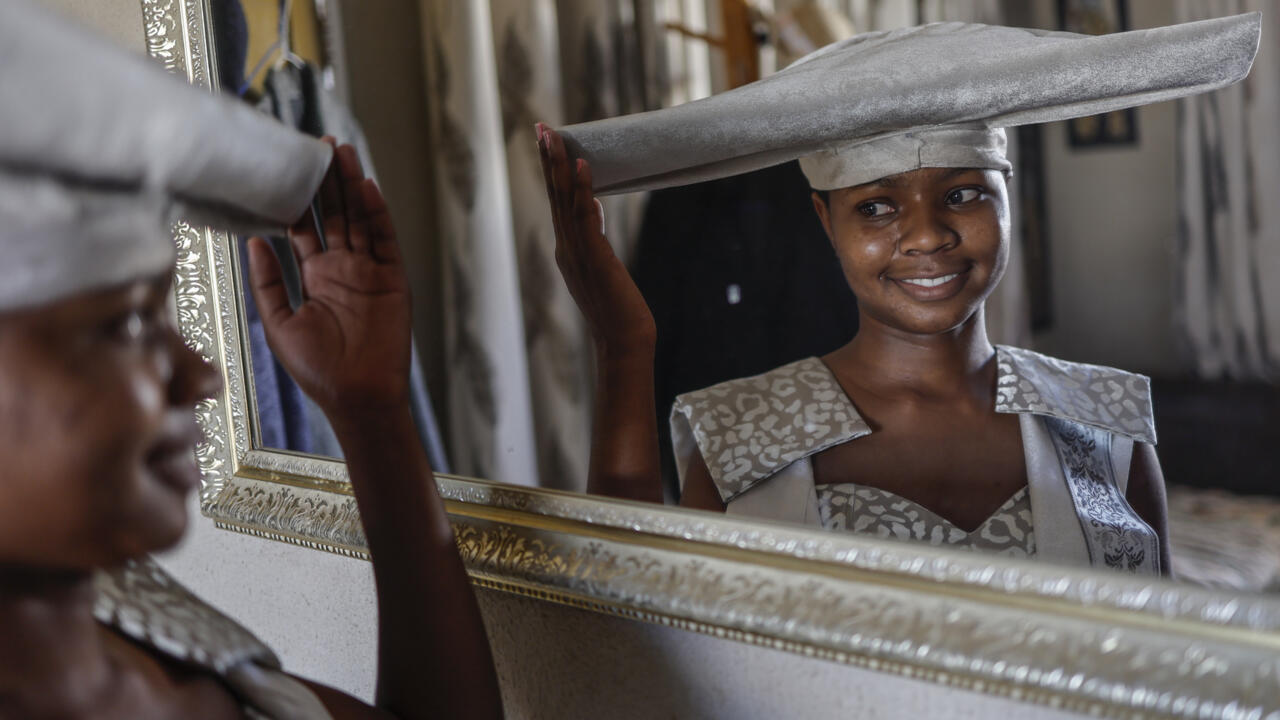“We don’t know if it was a choice to adopt that dress, or if it happened by force,” said Maria Caley, fashion lecturer at the University of Namibia.
But it carried through the traditional values of the Herero people, such as that a woman should cover her body and not even show her knees, Caley said.
And the Herero version of the dress is “completely different” to that of the first missionaries, having been adapted and appropriated to represent the Herero people, she said.
Horned headdress
Perhaps the most striking piece of the outfit is the headdress, called otjikaiva, which resembles the horns of a cow, reflecting the Herero roots as cattle herders.
“The headdress used to be very plump and chunky, not so wide from the head,” Caley said. “But now it has become very thin and very, very stylized.”
This is only one of Kavari’s innovations. Some of his designs have added several layered petticoats to the floor-length skirts, or abandoned the sleeves.
He caused an outcry with a design in 2013 that featured a snake in the headdress of a creation for the country’s Miss Universe contender.
“The journey hasn’t been that easy,” said the designer. “People are not easy when it comes to change.”
“Non-negotiables” are the length of the skirt and conservative neckline, said one of his top customers, Yamillah Vetarapi Katjirua, who owns about 50 creations from flesh-coloured to aquamarine and lapis lazuli.
“He has been able to maintain the integrity of the dress but still make it modern so that young people don’t disassociate from it,” she said. “For me he has struck that balance very well between modernising and respect.”
That so many people have an opinion on the dress shows that this aspect of the Herero culture is still “very much alive”, said Caley.






